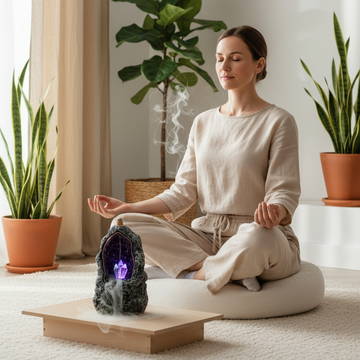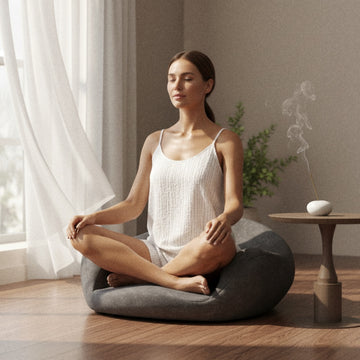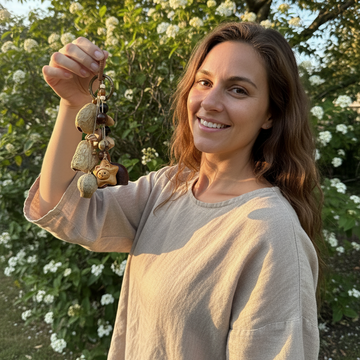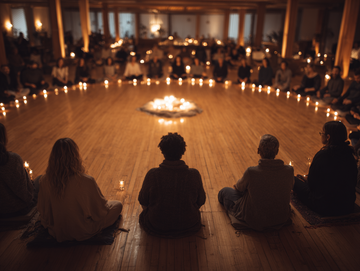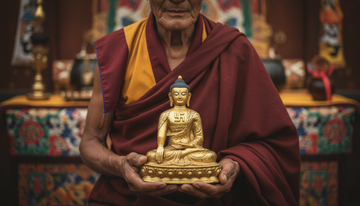Opening: The first sit wasn’t quiet—and that’s okay
On my first real sit, I wasn’t calm. My head was busy: Am I doing this right? Should I cross my legs? Why am I still thinking about spreadsheets?
Around minute three, I noticed wind outside the window, the rise of my chest, the cool touch at the nostrils. Thoughts were still there, but for the first time I sensed: I can see them without being dragged by them. The world didn’t change—a small lamp lit up inside me.
1) What meditation is (in simple terms)
Place attention on an anchor (breath/body/sound/steps). Each time you drift, return without judgment.
It’s not mind-blanking or religious privilege or “the longer the better.” It’s awareness before reaction—seeing and choosing.
Keywords embedded: how to start meditating, meditation for beginners, mindfulness practice, stress relief, focus training
2) Why start: Not “be silent,” but “return well”
-
Focus training: every notice-and-return strengthens the return “muscle.”
-
Emotion regulation: seeing arise—stay—fade prevents hijacking by anxiety/anger.
-
Body–mind coupling: softer breath & posture help the nervous system shift toward repair, aiding stress relief and sleep.
-
Cognitive flexibility: from “I am this thought” to “I’m seeing a thought.”
3) Proper meditation posture & setting
Chair (how do you meditate properly on a chair): feet flat; pelvis grounded; spine lightly lengthened; chin slightly tucked; jaw/shoulders soft; hands on thighs/belly; eyes closed or half-open.
Cushion: half-lotus or simple cross-leg; elevate hips to protect knees.
Room: soft light, phone muted; treat sounds as background; keep a light blanket or warm tea for a gentle close.
4) The core technique: breath awareness
-
Anchor attention at nostrils/upper lip (cool air) or belly rise-and-fall.
-
Three methods:
-
Sensation-following (no counting).
-
Counting (in–out = 1… to 10, restart kindly).
-
Light labeling (“thinking/hearing/itch/tight/worry”) → return.
Treat attention like a kitten you guide home—never yank a horse.
-
5) Three mini-practices you can do anywhere (beginner meditation steps)
-
Three-minute meditation: sit upright; three slower exhales; rest at the nostrils; drift → notice → return to the next inhale.
-
60-second body scan: sweep from brow to toes—tight/soft, warm/cool, contact/pulse—observe without judging.
-
Micro walking meditation: stand for three breaths; sync steps and breath (e.g., inhale 3, exhale 3); feel the soles.
-
Correct walking meditation posture: slow but natural pace, soft 2–3 m gaze, hands relaxed at belly/sides.
-
6) A 14-day starter plan (build, don’t binge)
Days 1–3 (Familiarize): 5 min breath awareness daily; drift → return to the next inhale.
Days 4–6 (Stabilize): 5 min morning + 5 min evening; add one 30-second pause before meetings/messages.
Days 7–10 (Expand): extend one sit to 8–10 min; add 5 min walking (even on a platform).
Days 11–14 (Deepen): add 3–5 min body scan at night (great for meditation for sleep and insomnia).
Track two numbers: returns today; streak days.
7) A ten-minute script (copy & use)
Timer → seat → three longer exhales → nostril or belly anchor → drift/return loop → optional light labels after minute 8 → 30-second body scan → whisper “thanks for showing up.”
8) Troubleshooting (how to start meditating when things get messy)
Too many thoughts → label gently (“thinking/worry/planning”) → return.
Drowsy → try morning vs night meditation, sit upright, half-open eyes, or walk 3 min before sitting.
Restless → ten slow exhales to “bleed off” pressure.
Pain → elevate hips or switch to a chair—health first.
No time → midday three-minute meditation + 5-min scan at night.
Self-criticism → measure attendance and returns, not “how still” you felt.
9) Meditation in daily life (quick stress relief for office workers)
Ten even breaths before meetings; one long exhale + 3-sec pause before replies; micro walking on platforms; 5-min body scan + one line of gratitude at bedtime.
10) My reflections: three quiet scenes
Insomnia: I stopped chasing sleep; a body scan became my switch. Often I doze off somewhere between calves and knees.
Pre-meeting nerves: I stand by a window, count ten breaths, and walk in with steadiness instead of bravado.
Conflict: I notice heat in my chest and tightness in my throat; I sip water, pause ten seconds, then say what I truly need.
Meditation didn’t make me saintly—it gave me room to breathe inside the same life.
11) FAQ (long-tails embedded)
How long should I meditate / how long to see results? 2–4 weeks for easier returns; 8–12 for steadier shifts.
Morning vs night meditation? Choose what you’ll keep; both is great.
Music? Prefer natural ambience at first.
Do I have to sit cross-legged? No—chair practice is fully valid.
Guided meditation? Helpful early on; aim to practice independently over time.
Closing
Starting to meditate isn’t about a heroic long sit; it’s about coming back daily. Give yourself 3–5 minutes today. The world might stay loud, but you’ll know where to place your heart.



